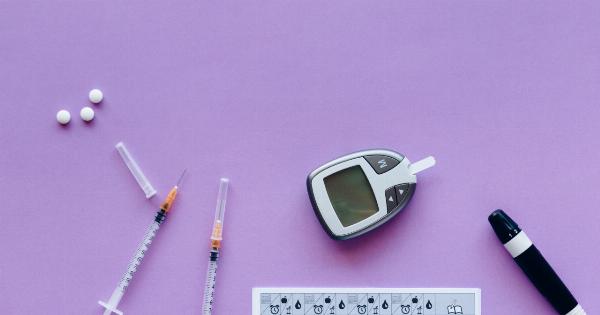Diabetes is a chronic metabolic disorder characterized by high blood glucose levels, either due to the body’s inability to produce insulin or its inability to use insulin effectively.
It affects millions of people worldwide and can lead to various complications if not managed well. With advancements in technology, several high-tech tools have emerged to help individuals with diabetes monitor and manage their condition more effectively.
These tools leverage the power of innovation to provide better control, convenience, and quality of life for people living with diabetes.
Continuous Glucose Monitoring (CGM)
One of the most significant advancements in diabetes management is the advent of Continuous Glucose Monitoring (CGM) systems.
CGM provides real-time insights into an individual’s glucose levels, eliminating the need for traditional fingerstick testing. These devices consist of a small sensor inserted under the skin to measure glucose levels in the interstitial fluid.
The sensor wirelessly communicates glucose readings to a receiver or smartphone, allowing users to track their glucose levels regularly.
Insulin Pumps
Traditional insulin injections have been the cornerstone of diabetes management for years. However, insulin pumps offer a more convenient and precise way of delivering insulin.
These small devices deliver insulin continuously throughout the day, mimicking the function of a healthy pancreas. Insulin pumps allow for flexibility in insulin dosing, and some integrate with CGM systems to create a closed-loop system, automatically adjusting insulin delivery based on glucose levels.
Artificial Pancreas Systems
Artificial Pancreas Systems, also known as closed-loop systems, combine the power of CGM and insulin pumps to create a fully automated solution for diabetes management.
These systems continuously monitor glucose levels and adjust insulin delivery in real-time, reducing the burden of manual interventions. By algorithmically analyzing the CGM data, these systems can predict and prevent blood glucose swings, improving overall blood glucose control.
Smart Insulin Pens
For individuals who prefer injecting insulin with pens rather than pumps, smart insulin pens offer an innovative solution.
These pens are equipped with Bluetooth technology, allowing them to wirelessly transfer insulin dosing data to a smartphone application. The app provides users with accurate records of their insulin usage, helping them track their dosing patterns over time. Some smart pens even provide reminders and alerts to ensure medication adherence.
Mobile Applications
Smartphones have become an integral part of our daily lives, and diabetes management is no exception. Numerous mobile applications have been developed specifically for people with diabetes.
These apps provide several functionalities, including glucose tracking, carbohydrate counting, reminders for medication and appointments, and even meal planning assistance. They empower individuals to stay organized and make informed decisions related to their diabetes management.
Telemedicine and Remote Monitoring
Telemedicine has gained significant popularity, especially in recent times. For individuals with diabetes, telemedicine enables remote consultations with healthcare professionals, reducing the need for in-person visits.
This technology allows for regular monitoring of diabetes-related parameters, such as glucose levels and medication adherence, through connected devices. Healthcare providers can remotely track their patients’ progress and provide timely guidance, leading to better diabetes control.
Smart Insulin Delivery Systems
Smart insulin delivery systems aim at improving the accuracy and convenience of insulin administration. These devices combine insulin pens or pumps with advanced technology to provide precise insulin doses and simplify the injection process.
Some smart insulin delivery systems utilize computer vision and machine learning algorithms to analyze the user’s injection technique, providing real-time feedback to ensure correct insulin delivery and injection site rotation.
Artificial Intelligence and Machine Learning
Artificial Intelligence (AI) and Machine Learning (ML) play an essential role in diabetes management. By analyzing extensive datasets, AI algorithms can predict glucose trends, identify patterns, and offer personalized treatment recommendations.
ML algorithms help individuals adjust their insulin dosage based on factors like physical activity, meals, and sleep patterns. These technologies continue to evolve, offering tremendous potential to improve diabetes care and outcomes.
Smart Contact Lenses
Smart contact lenses represent an exciting area of development in diabetes technology. These lenses have built-in sensors that monitor glucose levels in tears and provide continuous monitoring without the need for invasive procedures.
The data from the lens can be wirelessly transmitted to a smartphone, offering users real-time insights into their glucose levels. Researchers are also exploring the integration of drug delivery systems into smart contact lenses, which could potentially revolutionize diabetes management.
Robotics and Automation
Robotic technologies are being explored to automate certain aspects of diabetes management. For example, researchers are developing robots capable of drawing blood, performing glucose tests, and administering insulin injections.
These robots aim to reduce the burden on individuals with diabetes and improve accuracy in various diabetes care tasks.
Conclusion
The landscape of diabetes management has greatly benefited from high-tech tools and innovations.
Continuous Glucose Monitoring systems, Insulin Pumps, Artificial Pancreas Systems, Smart Insulin Pens, Mobile Applications, Telemedicine, Smart Insulin Delivery Systems, Artificial Intelligence, Smart Contact Lenses, and Robotics are just a few examples of the revolutionary technologies transforming diabetes care. These tools empower individuals with diabetes to monitor their blood glucose levels, administer insulin accurately, and make informed decisions to manage their condition effectively.
As technology continues to advance, the future holds even more promise for enhanced diabetes management and improved quality of life for people living with diabetes.































